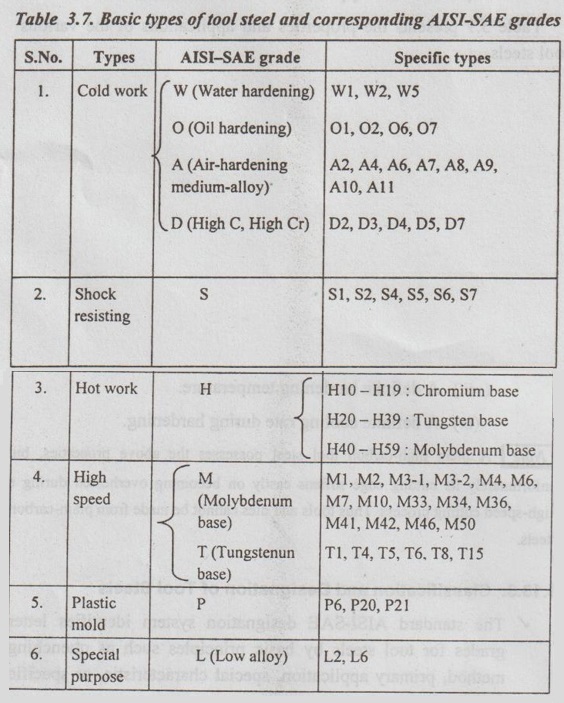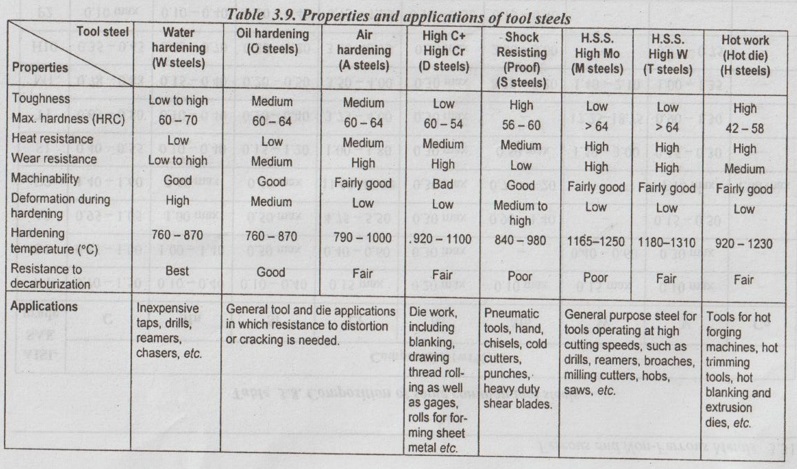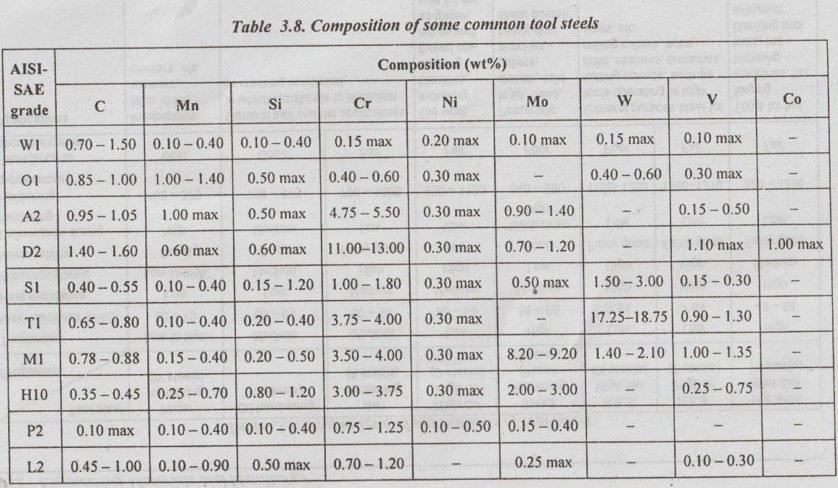Tools steels are metals used to make tools and dies for cutting, forming, or otherwise shaping a material into a component or part for a specific application.
TOOL STEELS
1. What are Tool Steels?
✓ Tools steels are metals used to make tools and dies for cutting, forming, or otherwise shaping a material into a component or part for a specific application.
✓ In other words, tool steels are metals designed to provide wear resistance and toughness combined with high strength.
✓ They are basically high-carbon alloys, where the chemistry of provides the balance of toughness and wear desired.
2. Properties of Tool Steels
Tool steels should have the following requirements:
(i) Good toughness.
(ii) Good wear resistance.
(iii) Very good machinability.
(iv) Slight change of form during hardening.
(v) Little risk of cracking during hardening.
(vi) Resistance to softening on heating.
(vii) Resistance to decarburisation.
(viii) A definite hardening temperature.
(ix) A definite cooling rate during hardening.
Note
A plain high-carbon tool steel possesses the above properties, but unfortunately its cutting edge softens easily on becoming overheated during a high-speed cutting process. Thus tools and dies cannot be made from plain-carbon steels.
3. Classification and Designation of Tool Steels
✓ The standard AISI-SAE designation system identifies letter grades for tool steels by basic principles such as quenching method, primary application, special characteristic, or specific industry involved.
✓ Table 3.7 lists the six basic types of tool steel and corres- ponding AISI-SAE grades. Individual alloys are then listed numerically within the grade to produce a letter-number identification system.

4. Composition of Tool Steels
The composition of some common tool steels is presented in Table 3.8.
5. Properties and Applications of Tool Steels
Table 3.9 presents the properties and applications of the various tool steels.
 Note
Note
1. A widely used high-speed tool steel is 18-4-1 high speed steel. This steel contains 18% tungsten, 4% chromium, and 1% vanadium. It is considered to be one of the best of all purpose tool steels.
2. Since molybdenum is a cheaper alloying element than tungsten and is about twice as effective as tungsten, the T steels have been almost sientirely replaced by M steels.
3. The cobalt high speed steel is also known as ultra or super high speed steel. This steel contains 20% tungsten, 12% cobalt, 4% chromium, and 2% vanadium.

No comments:
Post a Comment